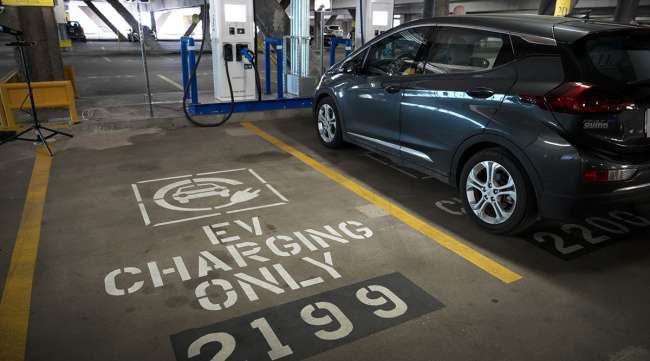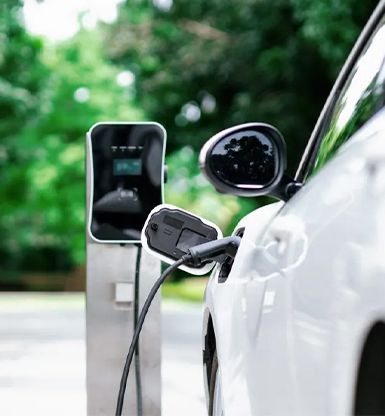Leading EV Charging News: Secret Updates on Facilities and Advancement

Current Innovations in Fast-Charging Technology

Furthermore, advancements in battery modern technology, including enhanced thermal administration systems and greater energy density batteries, enhance fast-charging capacities. These growths mitigate the danger of battery degradation during quick charging, guaranteeing longevity and performance for EV proprietors.
Additionally, the combination of wise billing solutions is boosting customer experience, allowing real-time tracking and vibrant prices models. EV Charging news. This flexibility allows chauffeurs to maximize billing times and prices based on grid demand
As automakers remain to purchase fast-charging networks, the cooperation between industry stakeholders is essential. Collaborations between charging terminal carriers and vehicle suppliers are leading the means for extensive coverage, ultimately promoting a much more robust EV ecosystem. These advancements are critical in supporting the shift to lasting transport.
Federal Government Efforts for Billing Growth
Government initiatives play an essential function in the development of electric car (EV) charging framework, helping with the shift to lasting transportation. Different government and state programs are being executed to enhance billing ease of access, decrease the economic problem on consumers, and promote the adoption of electrical cars.
Notably, the united state federal government has alloted significant financing with the Facilities Investment and Jobs Act, which earmarks $7.5 billion for EV billing network growth throughout the nation. This financing is intended at releasing countless new billing terminals, especially in underserved areas, therefore addressing variety anxiousness among prospective EV purchasers.
Furthermore, many states are passing regulation to streamline the allowing process for billing station installations, which is vital for speeding up release. Rewards such as tax debts and discounts for both consumers and services are likewise being presented to urge the installment of billing framework.
Furthermore, public-private collaborations are significantly coming to be an emphasis, leveraging exclusive financial investment to match government funding. These efforts highlight a collective strategy necessary for developing a effective and thorough EV billing network, ultimately contributing to a greener and even more lasting future.
Cutting-edge Battery Solutions Enhancing Efficiency
Changing the landscape of electric vehicle (EV) technology, innovative battery solutions are significantly improving performance and performance. Advances in battery chemistry, particularly with lithium-sulfur and solid-state batteries, are resulting in raised power thickness, which allows for longer varieties and faster billing times. These brand-new battery types have the possible to outshine typical lithium-ion batteries by using higher capacities while decreasing weight, thus enhancing total automobile efficiency.
In addition, growths in battery administration systems (BMS) are enhancing energy use and extending battery life-span. Intelligent formulas check battery health and wellness and performance, enabling real-time changes to billing and releasing processes. This not only improves the performance of the battery but likewise guarantees a more sustainable and reliable energy source for EVs.
Moreover, the combination of reusing technologies is dealing with the environmental impact of battery production and disposal. Developments in second-life applications for EV batteries are facilitating their use in energy storage space systems, contributing to a circular economy.
As these ingenious battery options continue to evolve, they assure to change the EV market, making electric lorries more accessible and appealing to a broader target market while supporting worldwide sustainability goals.

Collaboration Between Automakers and Charging Networks
Acknowledging the essential demand for a durable charging infrastructure, automakers are significantly collaborating with charging network providers to improve the EV ownership experience (EV Charging news). These partnerships aim to create a smooth billing ecosystem that benefits customers and sustains the shift to electrical vehicles
Major vehicle brands are joining pressures with recognized billing networks to increase their charging terminal insurance coverage, making certain chauffeurs have access to reliable and convenient charging choices. For instance, partnerships with networks like ChargePoint and Electrify America enable automakers to incorporate charging solutions straight right into their cars' navigating systems, directing users to the closest terminals and providing real-time availability updates.
Furthermore, these cooperations often cause the growth of fast-charging modern technologies that considerably minimize the moment needed to charge an EV. Get the facts By pooling resources and competence, automakers and charging networks can introduce quicker, producing options that fulfill the expanding demand for electric flexibility.
On top of that, joint campaigns may also bring about even more standardized charging methods, which can reduce consumer complication and advertise more comprehensive EV fostering. In general, these critical partnerships are crucial in developing a user-friendly and reliable billing infrastructure that meets the needs of a broadening electrical vehicle market.
Obstacles Dealing With EV Billing Facilities
As the electrical vehicle market remains to grow, several difficulties are emerging that hinder the advancement of a detailed charging check that facilities. One of the key barriers is the not enough number of charging terminals, especially in country and underserved urban locations. This gap creates range anxiousness among prospective EV buyers, deterring them from making the button.
Furthermore, the absence of standardization accountable technology complicates the framework landscape. Variants in plug types and billing rates can produce complication for users and enhance functional intricacies for charging network drivers. Furthermore, the integration of charging terminals into existing electrical grids positions considerable obstacles. Lots of regions deal with capability limitations, needing significant investments in grid upgrades to suit raised demand.
Another pressing concern is the high expense connected with the installation and upkeep of charging stations, which can be an obstacle for both public entities and private organizations. Lastly, regulative obstacles and zoning restrictions can delay the deployment of billing facilities, impeding progress in expanding essential services. Dealing with these challenges will be crucial for promoting a durable EV community that supports the change to sustainable transport.
Verdict
Finally, the recurring advancements in EV billing technology, sustained by substantial federal government initiatives and cutting-edge battery solutions, are essential for the growth and effectiveness of electric automobile framework. Partnerships between automakers and charging providers better improve station insurance coverage, dealing with the growing demand for available charging options. Despite challenges that persist within the EV billing landscape, these growths Recommended Site indicate a favorable trajectory in the direction of a much more lasting and effective electrical lorry ecological community.
Advancements in billing facilities have led to the development of ultra-fast battery chargers qualified of providing up to 350 kW of power, considerably lowering charging times. Variants in plug kinds and charging rates can develop confusion for users and raise functional complexities for billing network drivers.In final thought, the ongoing innovations in EV billing technology, sustained by considerable government initiatives and ingenious battery services, are essential for the growth and performance of electric vehicle framework. Partnerships in between automakers and billing suppliers additionally enhance terminal coverage, attending to the growing need for available billing options. Regardless of challenges that linger within the EV charging landscape, these advancements signify a positive trajectory in the direction of a more lasting and efficient electric automobile ecosystem.